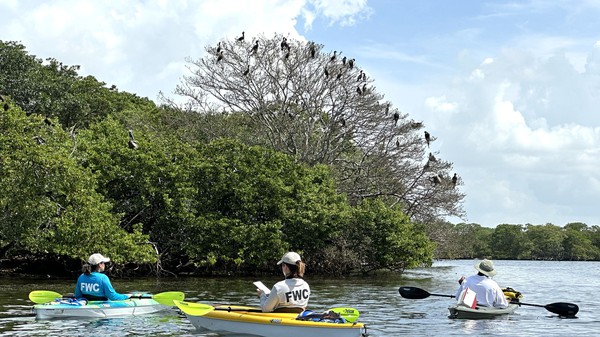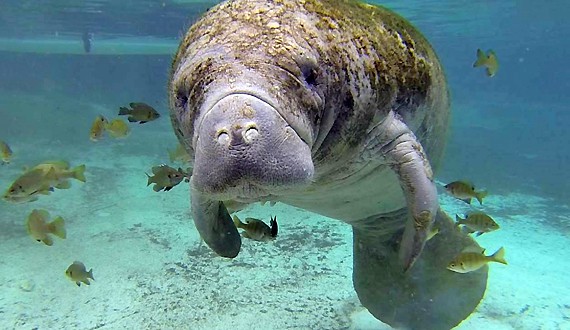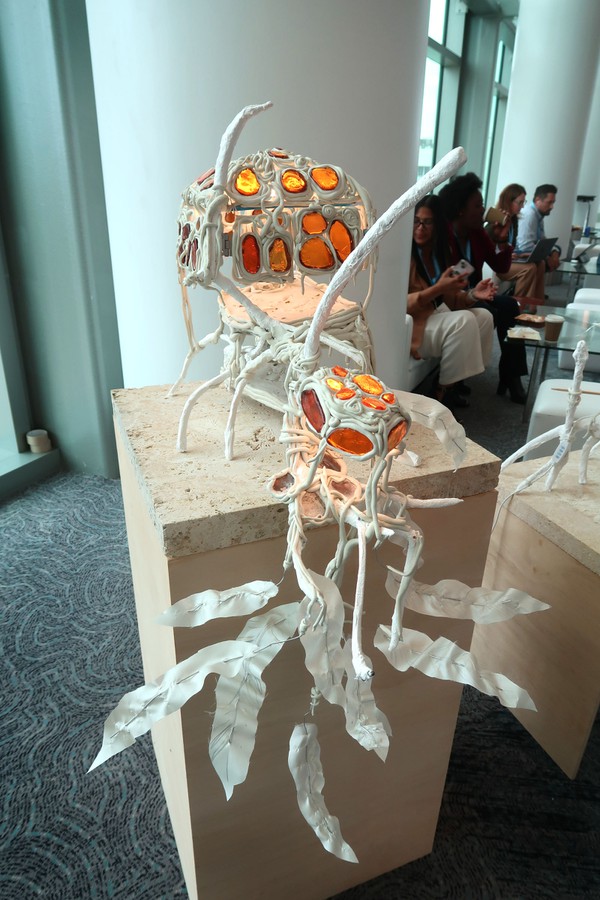Conservation Efforts Flow Through Miami-Dade
December 01, 2023. -- Across the country, from green design to rookery protections.
Just last month, Miami-Dade leaders revealed exactly how much of the county’s economy relies on Biscayne Bay – $64 billion of it, to be precise – solidifying our surrounding environment as a vital resource for all.
Green Infrastructure Project
Miami Waterkeeper has been joined by several local resiliency groups to bring the project to fruition, including One Water Academy, the Everglades Law Center, the University of Miami’s College of Engineering and Environmental Justice Clinic, and the People’s Economic and Environmental Group. It will be funded by an Environmental Protection Agency grant, while the Pisces Foundation has put forward the dollars to support community engagement efforts.
The community input tool was launched last month in El Portal, one of the locations under consideration for design. Recommendations are still needed.
Biscayne Bay Islands
The Florida Wildlife Commission surveyed the newly identified Morningside rookery for the first time July 13, 2023.
Environmentalists and residents of Morningside have been fighting for protections for Mangrove Island, located just off the coast of Morningside Park, since it was first identified to be a rookery over the summer.
At a Nov. 16 Miami commission meeting, now former Commissioner Sabina Covo sponsored a resolution that was initially meant “to establish a boating-restricted area around the nesting rookery on city of Miami-owned Mangrove Island.” Several residents spoke in favor of the item and were delighted to find that it passed unanimously.
Their excitement dwindled later when, to their dismay, they realized that the language had been significantly altered. The resolution that was passed removed any mention of a boating-restricted area, instead directing Arthur Noriega, the city’s manager, to work with county and state agencies “to limit the impact of potentially harmful activity” around the rookery.
The amendment was communicated during the commission meeting by city attorney Victoria Mendez and referred to as a “substitution,” although residents felt misled by the failure to explicitly mention the removal of the boating-restricted area.
One of the state agencies listed by name within the revised legislative text is the Florida Inland Navigation District (FIND), which many see as the culprit for the last-minute change. Prior to the commission’s consideration of the item, FIND threatened to pull its more than $4 million grant awarded to the city for shoreline improvements in Morningside Park if the boating-restricted area were to be passed.
FIND claims that the boating restriction, and the potential creation of a critical wildlife area, would “have potential negative impacts on boating and public access in the area of Morningside Park,” according to the taxing district’s Nov. 17 agenda.
It is unclear what will come next in the effort to protect the newly identified rookery. Covo was unseated after losing a Nov. 21 runoff to longtime activist Damian Pardo, a resident of Morningside.
Covo also sponsored a resolution at the same meeting directing Noriega to create a “Leave No Trace” policy for city-owned islands, lands and facilities along Biscayne Bay, which was approved unanimously. The policy will come back to the commission within 90 days of the Nov. 16 meeting for review.

(Courtesy of Christopher Boykin. The Florida Wildlife Commission surveyed the newly identified Morningside rookery for the first time July 13, 2023.)
Endangered Manatees?
The U.S. Fish and Wildlife Service is currently conducting a 12-month review to decide whether the West Indian manatee – of which the Florida manatee is a subspecies – should be restored to endangered status.
The Florida manatee was downlisted by the U.S. Fish and Wildlife Service from “endangered” to “threatened” in 2017. Many conservationists viewed the decision to be premature and unwarranted, citing the steady rate of manatee deaths caused by boating and habitat loss in years just leading up to the downlisting.
Several parties – including the Center for Biological Diversity, Harvard
Animal Law & Policy Clinic, Miami Waterkeeper, Save the Manatee Club and Puerto Rican engineer Frank S. González Garcia – followed suit by filing a petition in November 2022 with more than 150 pages of history, population data and threats affecting the West Indian manatee.
The U.S. Fish and Wildlife Service decided in October to reconsider its designation, following a 90-day finding which found that “the petitioned actions may be warranted.” The organization is inviting new science and data during its one-year finding to aid its analysis on the West Indian manatee.

(Center for Biological Diversity. The Florida manatee, a subspecies of the West Indian manatee, is currently under review by the U.S. Fish and Wildlife Service to determine whether its designation as an endangered species should be restored.)
Climate Summit
The 15th annual Southeast Florida Regional Climate Leadership Summit took place this year in Miami-Dade County at the Miami Beach Convention Center Nov. 16 and 17. It attracted industry leaders from across the county and state to discuss topics ranging from the ongoing statewide home insurance crisis to resilience efforts happening at the local level.
Michael Connor, assistant secretary of the Army for Civil Works at the U.S. Army Corps of Engineers, was among the various speakers. He brought with him sobering news.
“The reality is what we’re experiencing now is likely to get worse with respect to the extreme weather events that we see right now,” said Connor within the first hour of the two-day event.
He designated South Florida as the epicenter of those climate risks. That said, he promised not to walk away from Miami-Dade County, in fact vowing to accelerate its Back Bay Study by phasing an approach that focuses on “non-structural measures” in the short term.
The U.S. Army Corps of Engineers was forced to abandon its plan for a 20-foot seawall along Biscayne Bay earlier this year due to lack of public consensus. Connor said the organization hopes to have a revised plan ready to propose to Congress next year within the Water Resources Development Act of 2024.
The remainder of the summit brought various panels and opportunities for networking between local nonprofit organizations and industries pushing innovative climate technology. Many additionally discussed how to make the climate movement more engaging for the everyday person, including uplifting grassroots organizations and using art to do so.

(Samantha Morell for Biscayne Times. A Lee Pivnik sculpture displayed at last month’s climate summit, made with mangrove branches and natural pine rosin, emphasizes his research on sustainable building practices.)
Readership: 75,000monthly unique visitors.





